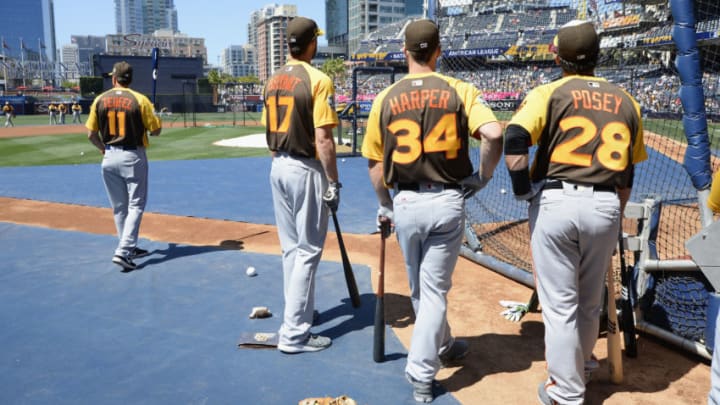
One of the biggest thing that plagued the Giants offense in 2018 was their ability to hit with runners in scoring position. They were once of the worst teams in baseball at it, posting a .239 average w/RISP. That’s horrendous. 24 of their 133 homers came w/RISP, so they hit 109 solo homers. Yikes.
Granted just having some higher OBP around would help that out a bit. But throwing in Bryce’s OBP of nearly .400, his heavy on base presence would sure help that out quite a bit. But what about what he does w/RISP, and how does that compare to what McCutchen did in 2018?
More from Around the Foghorn
- SF Giants: Hard-throwing reliever could be key in playoffs
- SF Giants: Kevin Gausman’s sacrifice fly leads to walk-off win
- SF Giants activate 2B Donovan Solano, option Thairo Estrada
- SF Giants place closer Jake McGee on IL, recall Jay Jackson
- Podcast: SF Giants drop pair against Padres, gear up for Atlanta
With Runners in scoring position in 2018, McCutchen slashed .224/.362/.411/.779. His numbers without any runners on base were significantly better. He brought in 42 runs w/RISP as well. What did Bryce do in 2018?
Harper hit .290/.458/.524/.982 with runners in scoring position in 2018, all significantly higher than his numbers without runners on base. Surprisingly though, he only hit 6 of his 34 homers with runners on base. So how much were non-Harper National’s getting on base?
Well, if you subtract Harper’s numbers from the National’s totals, their team OBP for 2018 drops nearly 30 points, and from second in the league to within the bottom five.
Lesson? Harper’s OBP, and ability to hit with Runners in Scoring Position was almost transformative. If you take them away, their offense turns from a top 5 offense to a slightly below average offense.
Now the Giants do not have as great of a supporting cast as the Nationals did, at least in terms of offensive production. However, it will be very intriguing to see where they land in 2019 without Harper in their lineup, as opposed to just removing his numbers from the equation. And if the Giants were to actually have Harper in the lineup, it would be incredibly intriguing to see what happens to the numbers of everyone around him.
